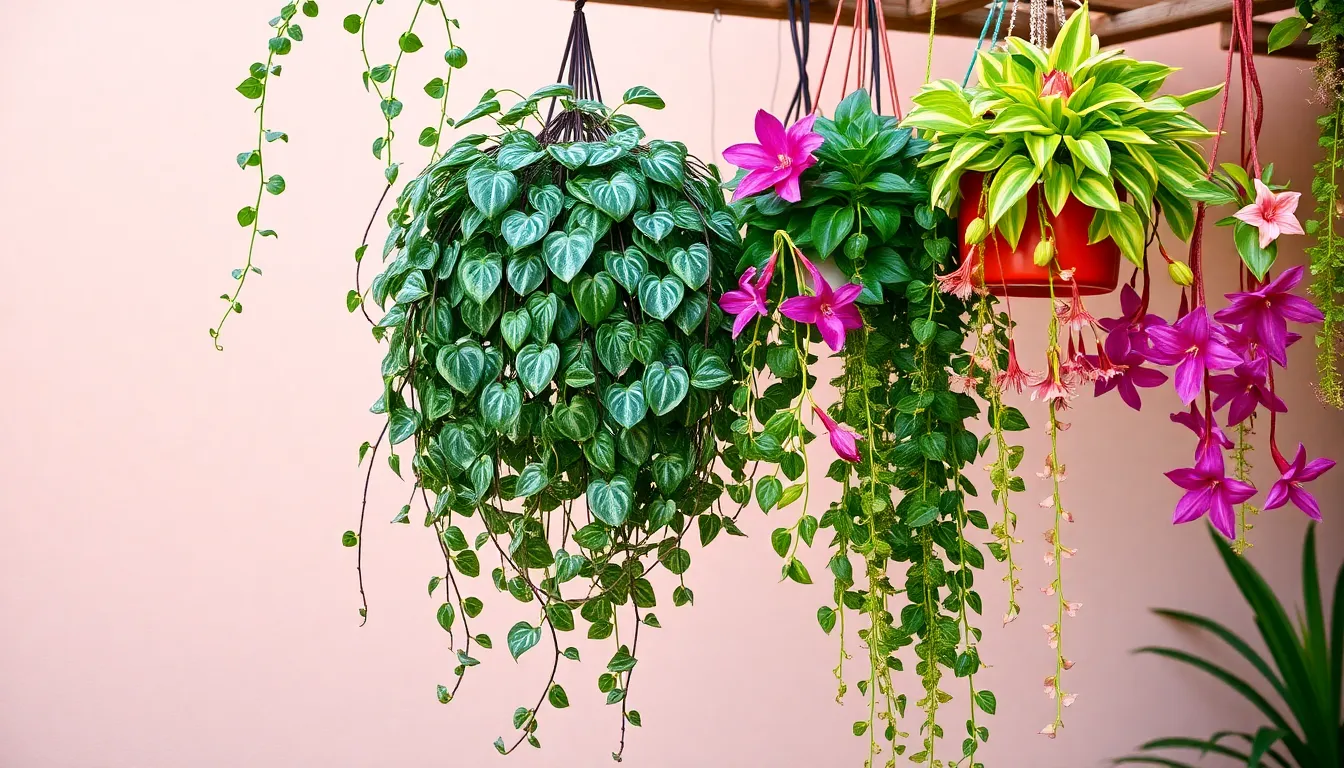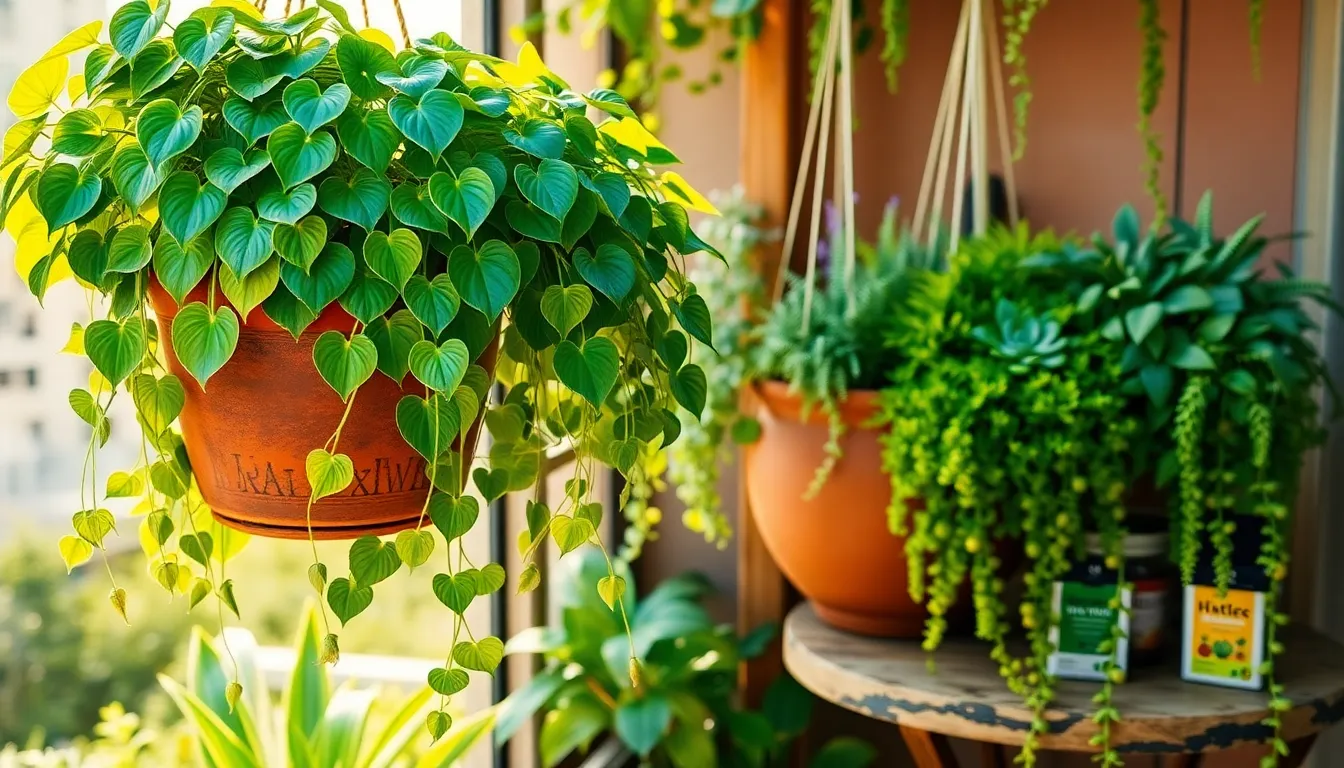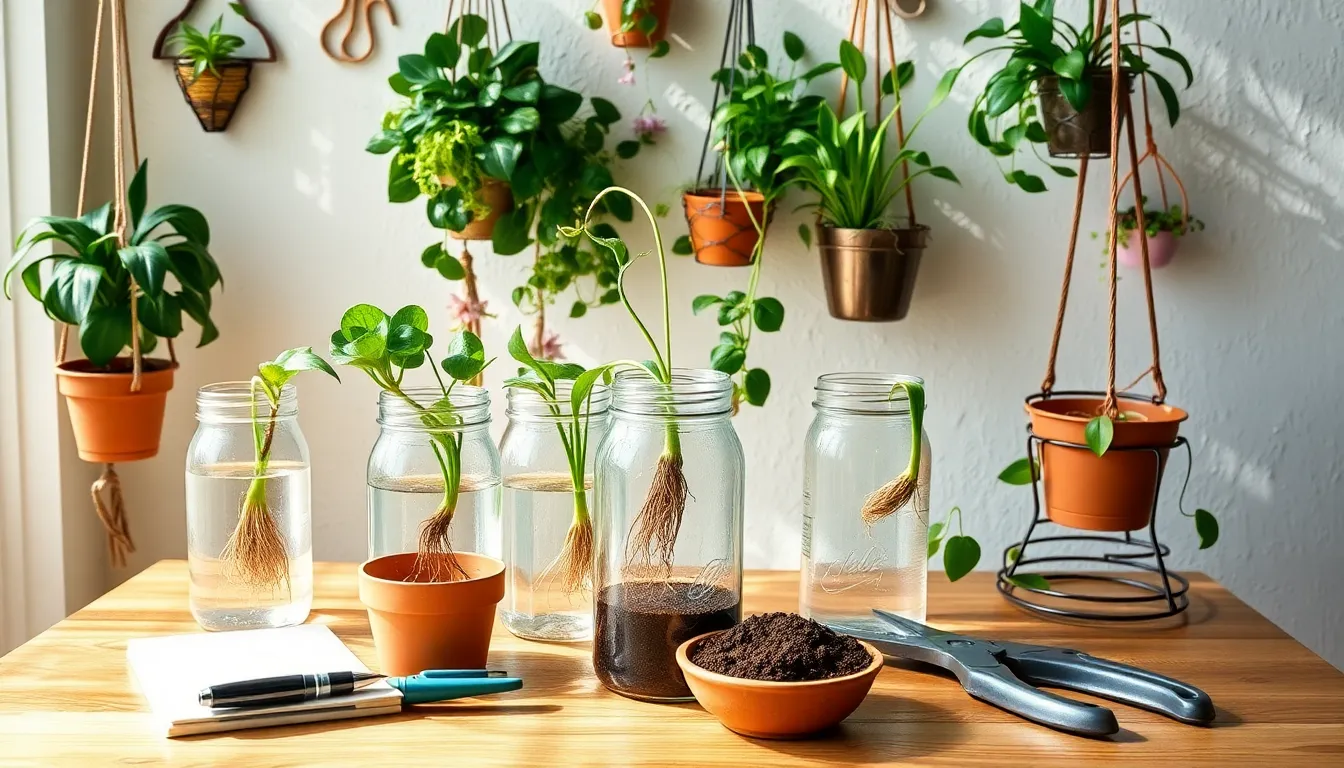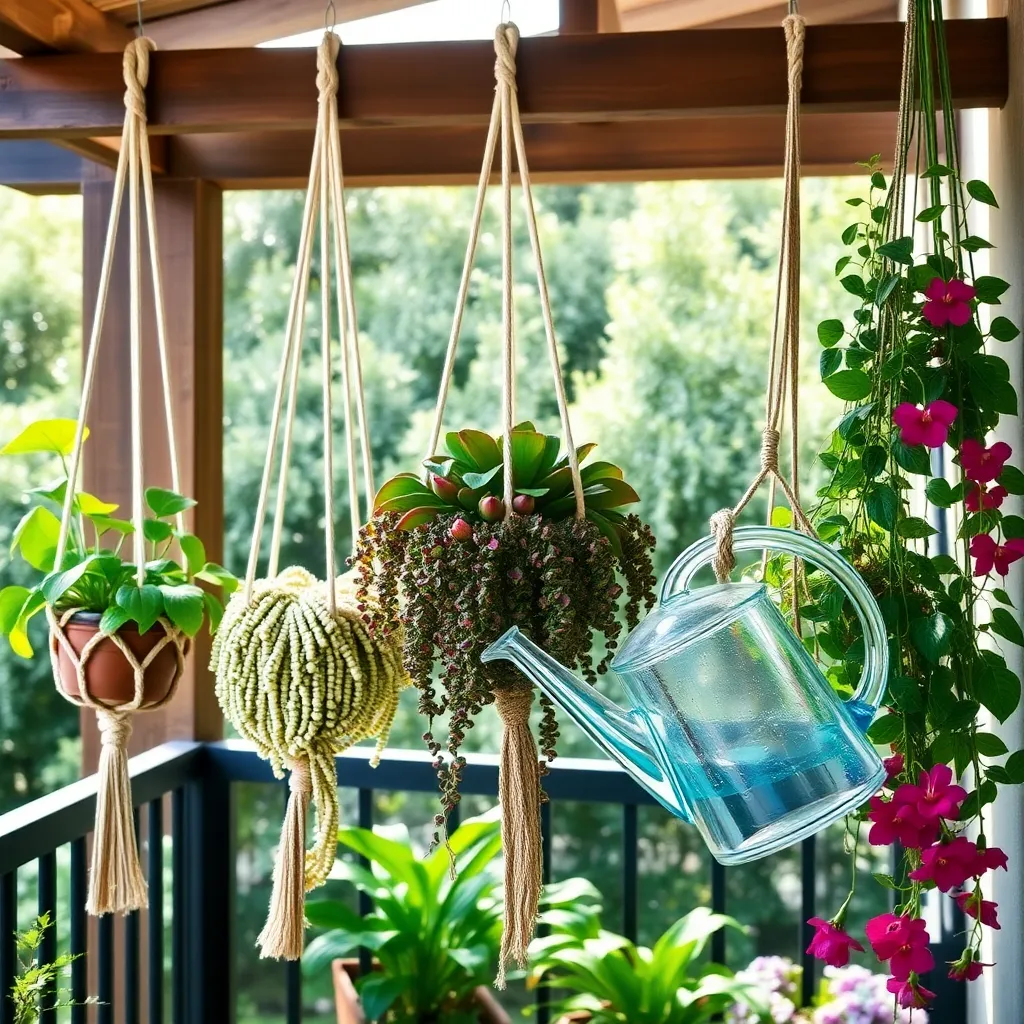The allure of hanging plants is undeniable, offering a lush tapestry of greenery that dances gracefully above our heads. Whether you’re a gardening novice or a seasoned green thumb, incorporating hanging plants into your space can transform any area into a verdant sanctuary. Their ability to elevate a room—literally and figuratively—makes them an exciting addition to both indoor and outdoor settings, proving that plant care truly knows no bounds.
In this article, we’ll delve into creative DIY projects that highlight the versatility of hanging plants, making them a perfect fit for any home or garden. You’ll discover ways to craft unique plant displays that not only enhance your living space but also promote a sense of tranquility and well-being. From crafting charming macramé holders to repurposing everyday items into stunning plant hangers, these projects are designed to cultivate your creativity and inspire new approaches to plant care.
Embracing hanging plants can be a gratifying endeavor that combines functionality with artistry, building a bridge between nature and your personal style. As we explore these ten DIY projects, you’ll gain practical tips on plant selection, care routines, and design principles that ensure your green companions thrive. Whether you’re aiming to start small with a single cascading vine or envisioning a lush hanging garden, this guide will equip you with the knowledge and confidence to create your own botanical masterpiece.
Choosing the Perfect Plant Type
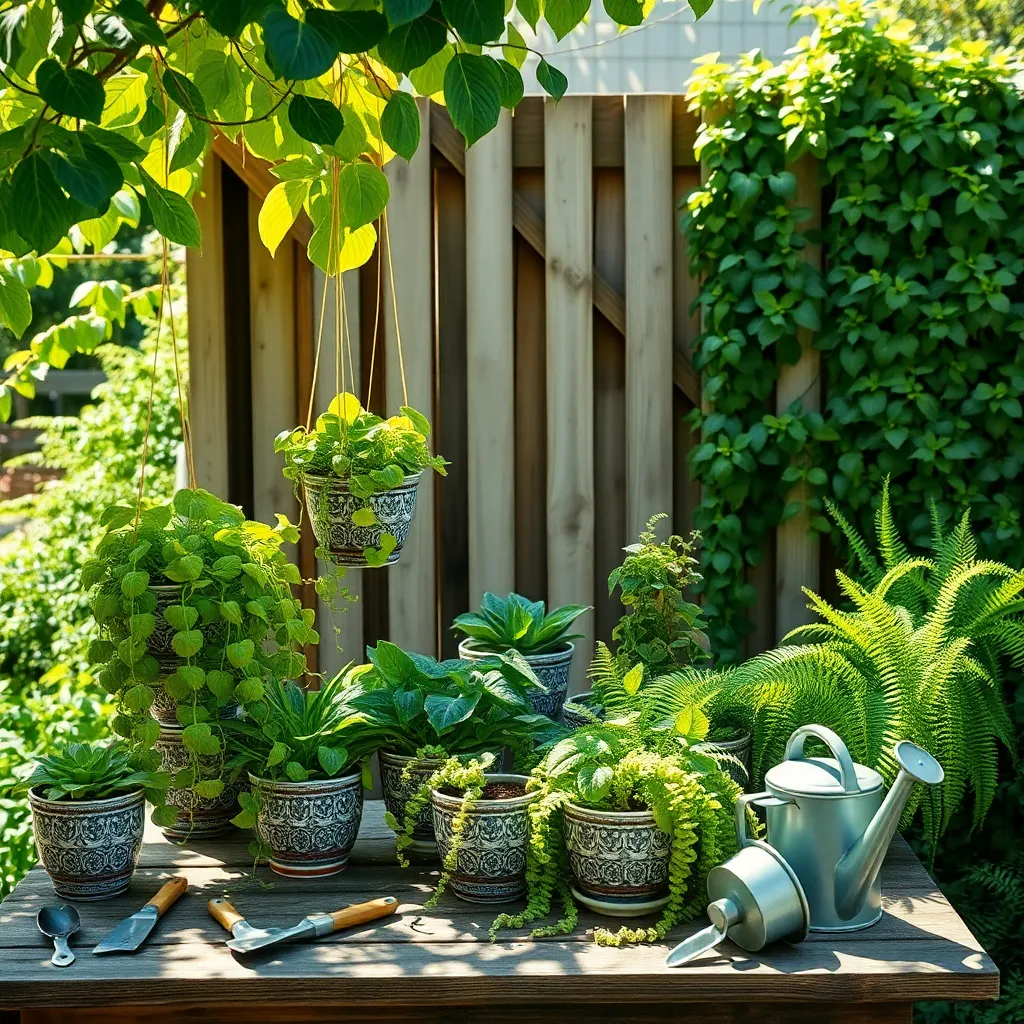
To choose the perfect plant type for your hanging plant project, start by considering the environmental conditions of your space. Evaluate factors such as light availability, temperature fluctuations, and humidity levels to ensure your plant will thrive.
For areas with low light, consider using plants like pothos or spider plants, which are known for their adaptability. On the other hand, if your space receives abundant sunlight, succulents or ferns can be excellent choices due to their preference for bright locations.
When selecting a plant, also think about the maintenance level you’re comfortable with. Beginners might opt for hardy plants like philodendrons that require minimal care, while experienced gardeners might enjoy the challenge of orchids, which need specific humidity and watering conditions.
It’s crucial to use the right soil mixture to support your chosen plant type. A general rule of thumb is to use a well-draining potting mix, perhaps adding perlite or sand to ensure excess water doesn’t accumulate and cause root rot.
For those ready to elevate their plant care, consider the benefits of a watering schedule tailored to your plant’s needs. Most hanging plants thrive with a consistent routine, so be prepared to check soil moisture regularly and adjust watering frequency as needed, especially during seasonal changes.
Creative Hanging Basket Ideas
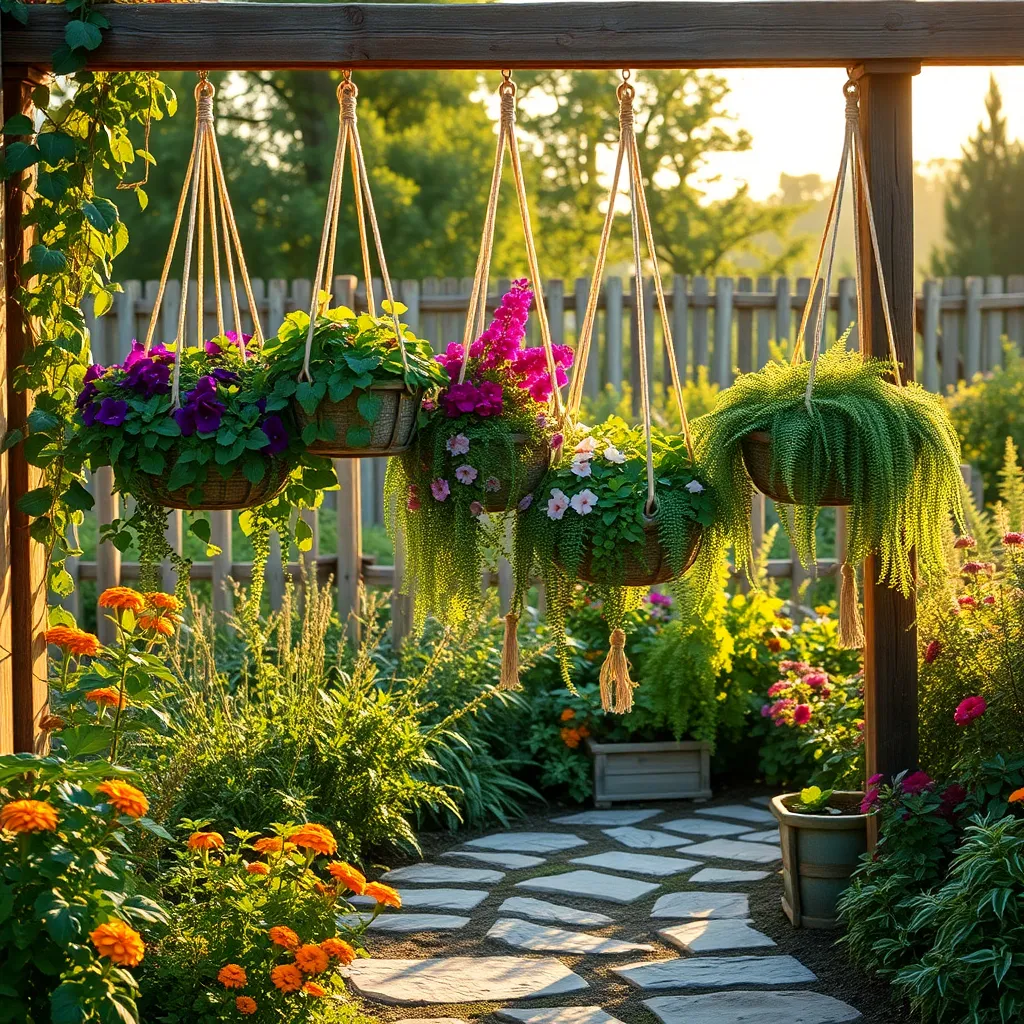
Hanging baskets offer a unique way to add vertical interest and lush greenery to any space. Begin by selecting lightweight containers with good drainage to ensure your plants thrive.
Consider mixing different plant types for varied textures and colors that complement each other. For a balanced display, combine trailing plants like ivy or lobelia with upright varieties such as geraniums or fuchsias.
Using the right soil mix is crucial for maintaining plant health in hanging baskets. Opt for a high-quality potting mix that retains moisture yet drains well, adding perlite or vermiculite if necessary to improve aeration.
Watering is essential, especially since hanging baskets dry out faster than ground pots. Check the soil moisture daily and water until it runs through the drainage holes, ensuring even hydration without waterlogging.
For a touch of creativity, consider adding edible plants like strawberries or herbs into your basket mix. Not only do they provide fresh produce, but they also add a delightful scent and can be easily harvested.
Advanced gardeners might try incorporating drip irrigation systems to maintain consistent moisture levels. This technique is perfect for those who travel frequently or live in hotter climates, making plant care more manageable.
Regular feeding can make a significant difference in plant performance. Use a balanced liquid fertilizer every two weeks during the growing season, applying it according to the package instructions to promote vigorous growth and blooming.
DIY Macramé Plant Hanger Tutorial
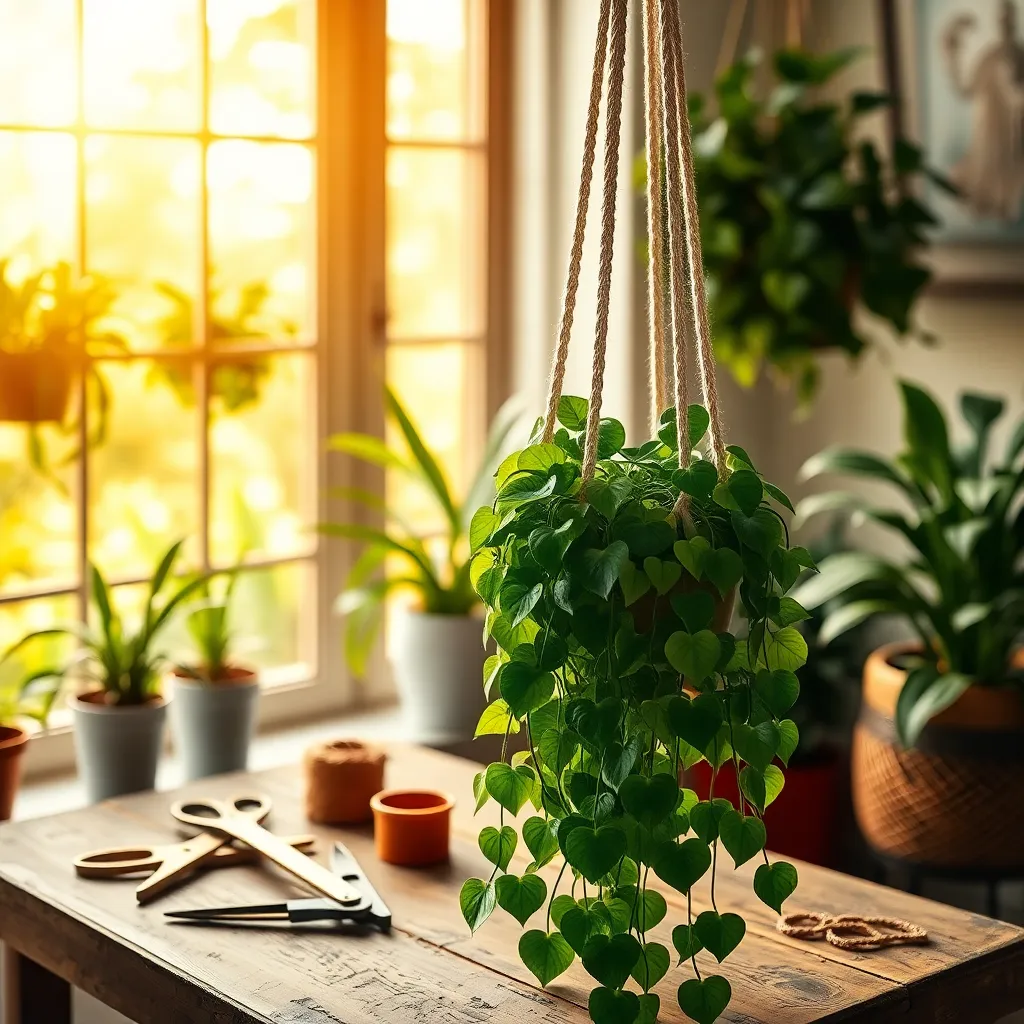
Creating a DIY macramé plant hanger is a fantastic way to add a personal touch to your indoor or outdoor garden. This project is not only aesthetically pleasing but also functional, allowing your plants to thrive in suspended elegance.
To start, gather essential materials such as cotton cord, scissors, and a metal ring. Opt for a cord thickness of about 3-4mm, which provides a good balance of strength and flexibility for most indoor plants.
Begin by cutting eight equal lengths of cord, each about 2.5 meters long. Fold them in half and loop them through the metal ring, securing them with a lark’s head knot to create a total of 16 strands.
Next, start tying square knots with groups of four cords, ensuring the knots are spaced about 5-10 cm apart. As you work down the cords, experiment with adding beads or using different knot patterns to create a unique design.
Once you have reached the desired length, gather all the cords together and tie a large knot at the end. Trim any excess cord to create a neat finish, and your plant hanger is ready to be used.
When choosing a plant for your hanger, consider options like pothos or spider plants, which thrive in indirect light and are forgiving of occasional watering lapses. Ensure your plant’s pot has drainage holes to prevent waterlogging, a crucial step for maintaining healthy roots.
For advanced gardeners, try incorporating plants like ferns or orchids, which require more specific humidity and light conditions. Position your macramé hanger where it receives bright, indirect light and maintain a consistent watering schedule tailored to the plant’s needs.
Repurposing Items as Plant Holders
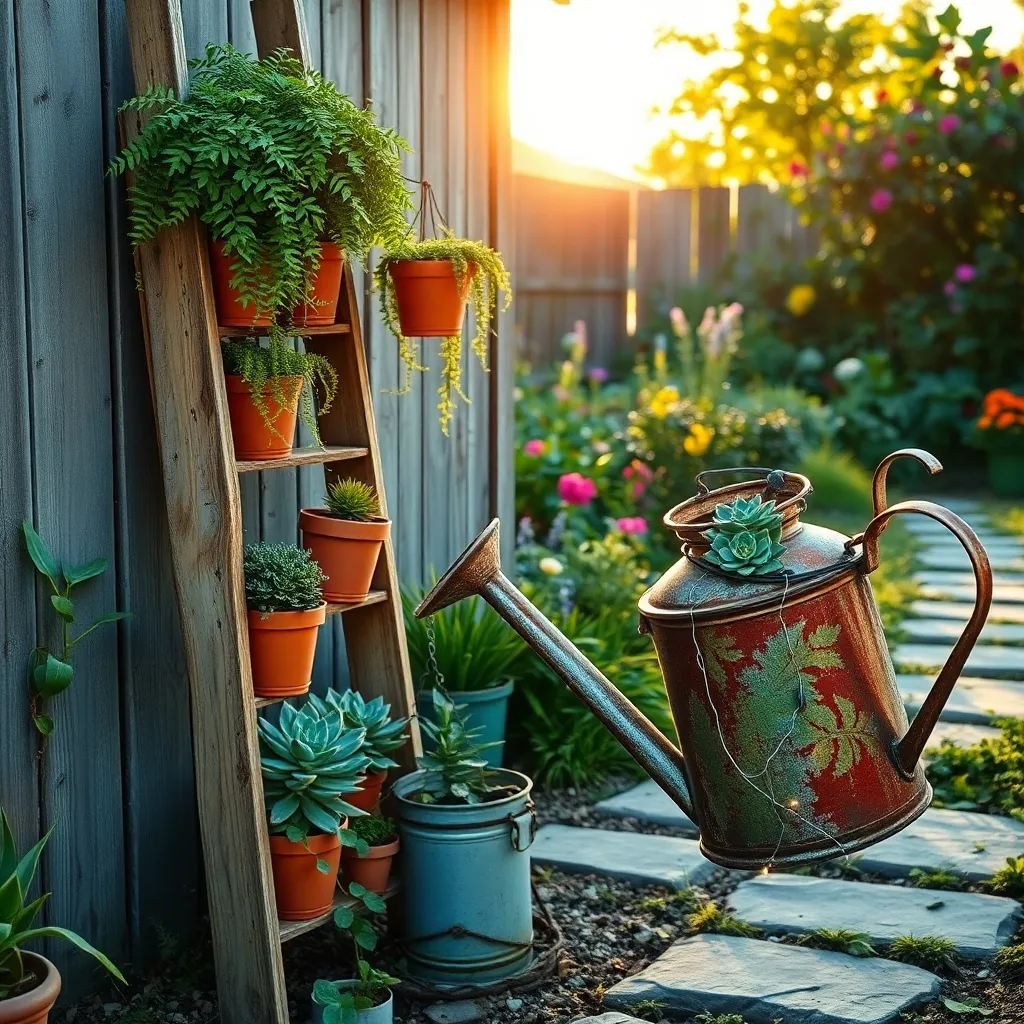
Repurposing household items as plant holders not only gives your garden a unique charm but also helps reduce waste. Look around your home for unused items like old teapots, boots, or even colanders that can be transformed into creative plant holders.
When selecting items to repurpose, ensure they have adequate drainage to prevent root rot. You can easily drill holes into the bottom of most containers if they don’t already have them, allowing excess water to escape.
Fill your chosen container with a well-draining potting mix, which is crucial, especially for plants prone to overwatering like succulents. For beginners, a mix of peat, perlite, and pine bark offers a balanced environment, promoting healthy root development.
Advanced gardeners can experiment with different soil compositions based on the specific needs of their plants. For instance, adding a handful of sand to your potting mix can enhance drainage, benefiting plants like cacti or herbs that thrive in drier conditions.
Vertical Garden with Hanging Pots
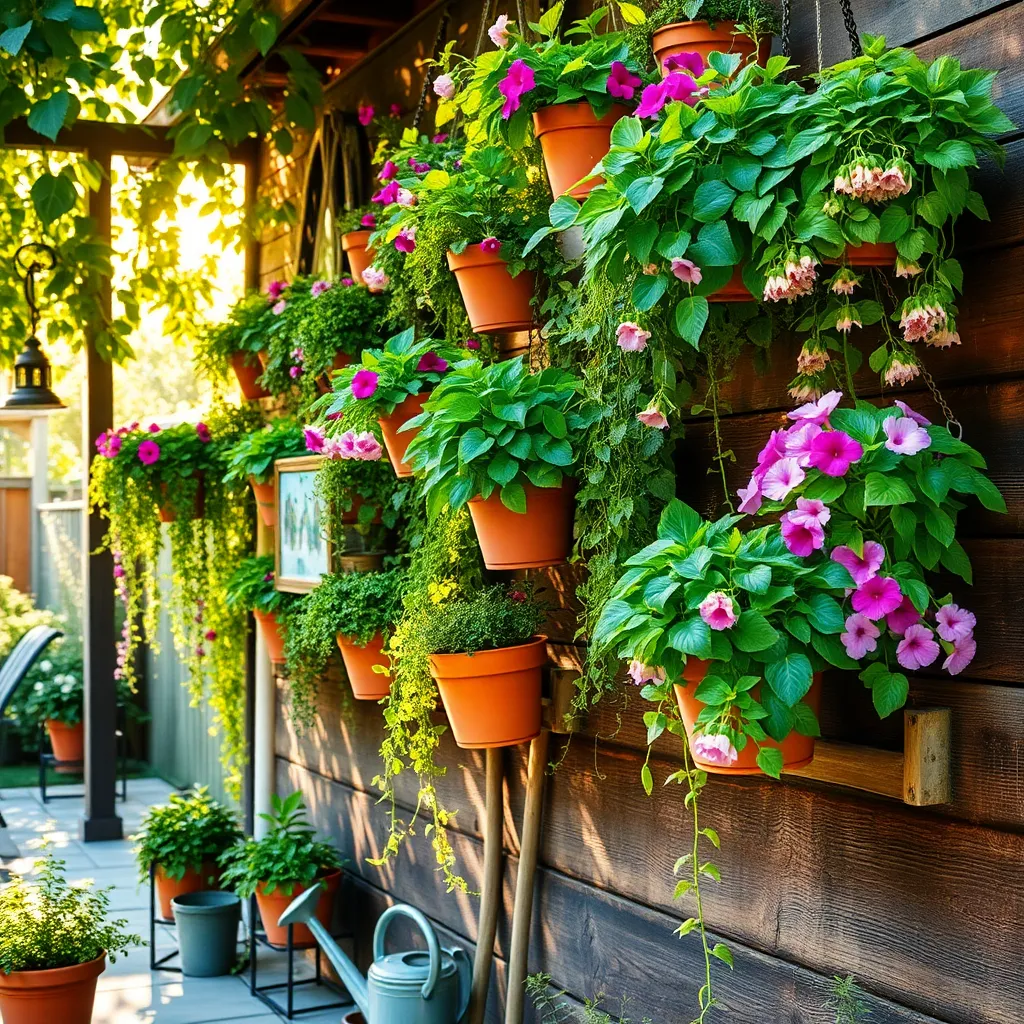
Creating a vertical garden with hanging pots is an excellent way to maximize space and add visual interest to your gardening setup. Start by selecting sturdy wall brackets or a trellis system that can support the weight of your chosen pots.
Choose lightweight pots made of materials like plastic or fiberglass to minimize stress on your support structure. When arranging your hanging pots, consider the sunlight patterns in the area to ensure each plant receives adequate light.
It’s important to select plants that thrive in your specific environment, such as succulents for sunny spots or ferns for shadier areas. Make sure to use a high-quality potting mix with good drainage to prevent root rot and promote healthy growth.
Watering can be a challenge with vertical gardens, so install a drip irrigation system for consistent moisture without overwatering. For more advanced gardeners, consider integrating a moisture sensor to help monitor and adjust water levels as needed.
Indoor Hanging Herb Garden Setup
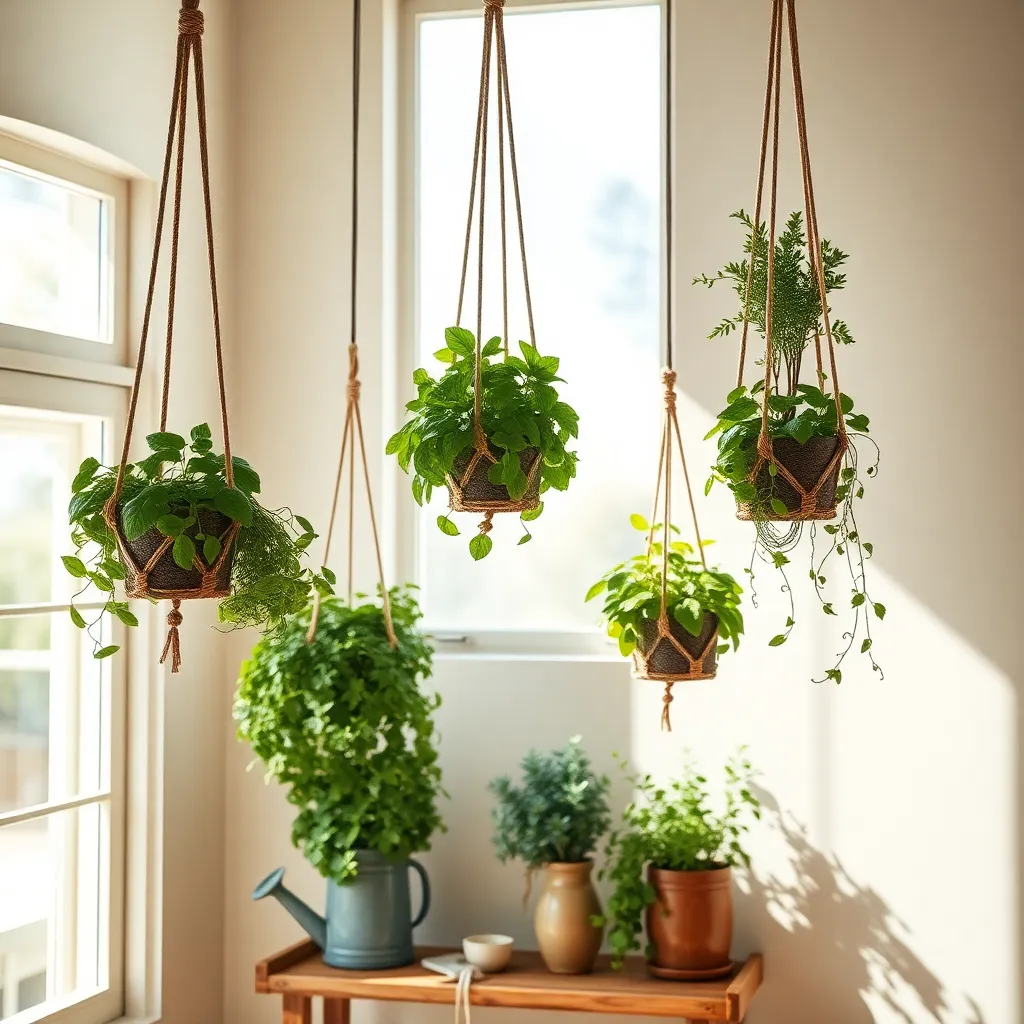
Creating an indoor hanging herb garden is a fantastic way to bring fresh flavors and greenery into your home. Choose a well-lit area such as a kitchen window or a sunny corner to ensure your herbs thrive.
Start by selecting herbs that grow well indoors, like basil, mint, and rosemary. These herbs require at least 6 hours of sunlight or can be supplemented with grow lights if natural light is insufficient.
Use lightweight pots with drainage holes to prevent waterlogging, and fill them with a quality potting mix. A potting mix specifically designed for herbs will provide the necessary nutrients and promote healthy growth.
Watering is crucial, but be cautious not to overwater. Check the soil moisture by sticking your finger about an inch deep; if it’s dry, it’s time to water, ensuring the water drains completely.
For an added touch, you can create a simple watering schedule by hanging your herbs in a way that allows easy access. This setup not only makes maintenance easy but also keeps your herbs within reach for cooking.
Fertilize your herbs every four weeks with a diluted liquid fertilizer to keep them vibrant. This will ensure continuous growth and a bountiful harvest throughout the year.
Designing a Hanging Plant Wall
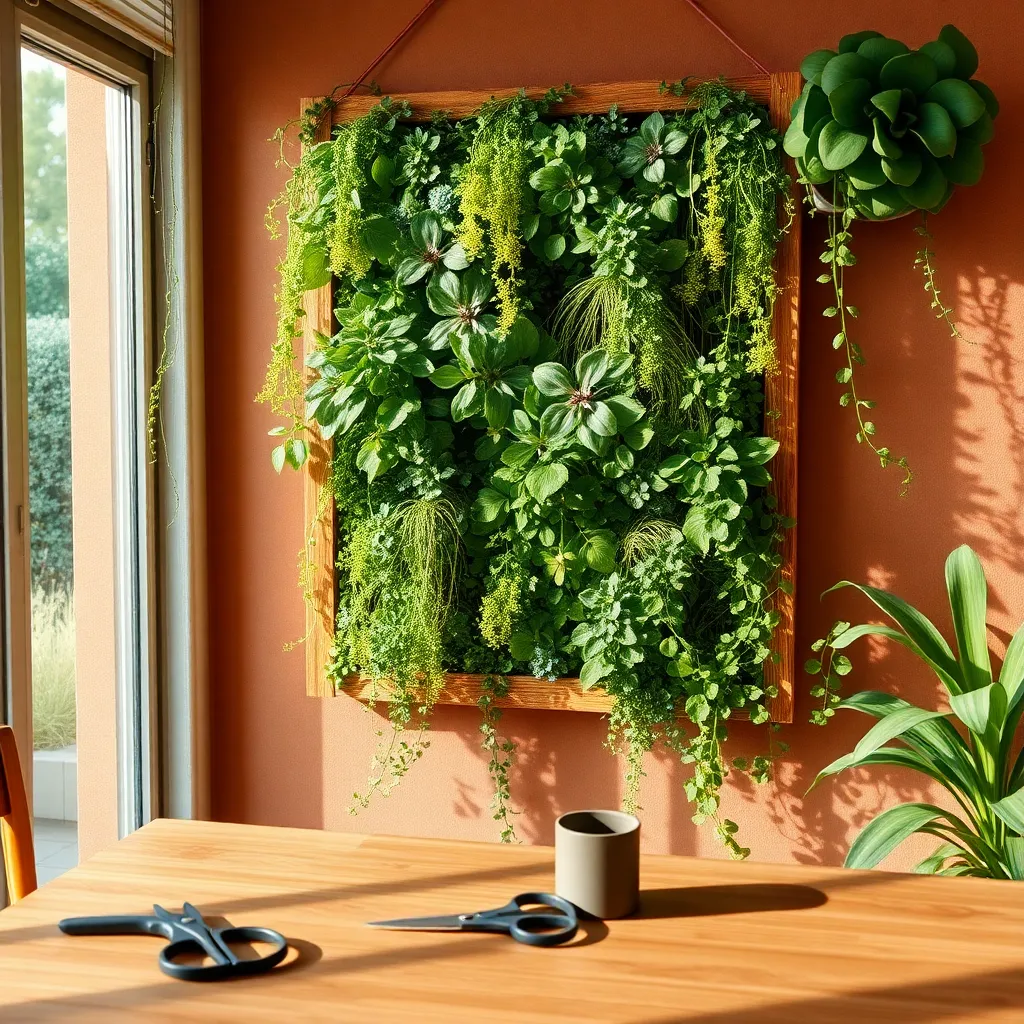
Creating a hanging plant wall can transform any indoor or outdoor space into a lush, green haven. Begin by choosing a sturdy wall that receives the right amount of light for your selected plants, whether it’s bright, indirect light for most indoor plants or direct sunlight for sun-loving varieties.
Next, decide on the type of structure you want to use, such as a metal grid, wooden frame, or a series of shelves. Ensure your structure can support the weight of the plants and their containers, using anchors or brackets for added stability.
When selecting plants, consider varieties that thrive in hanging environments, such as pothos, ferns, or succulents. Opt for lightweight pots or hanging containers with good drainage to prevent waterlogging, ensuring the plants remain healthy and vibrant.
Watering frequency is crucial: most hanging plants need watering once the top inch of soil feels dry, but this can vary based on plant type and environmental conditions. Incorporate a drip irrigation system if you have a large wall installation, making maintenance easier and more efficient.
To maintain your plant wall, regularly trim and prune the plants to encourage growth and prevent overcrowding. Fertilize every few months with a balanced liquid fertilizer to provide essential nutrients, ensuring your plant wall remains a thriving and beautiful focal point in your space.
Using Hanging Plants for Privacy
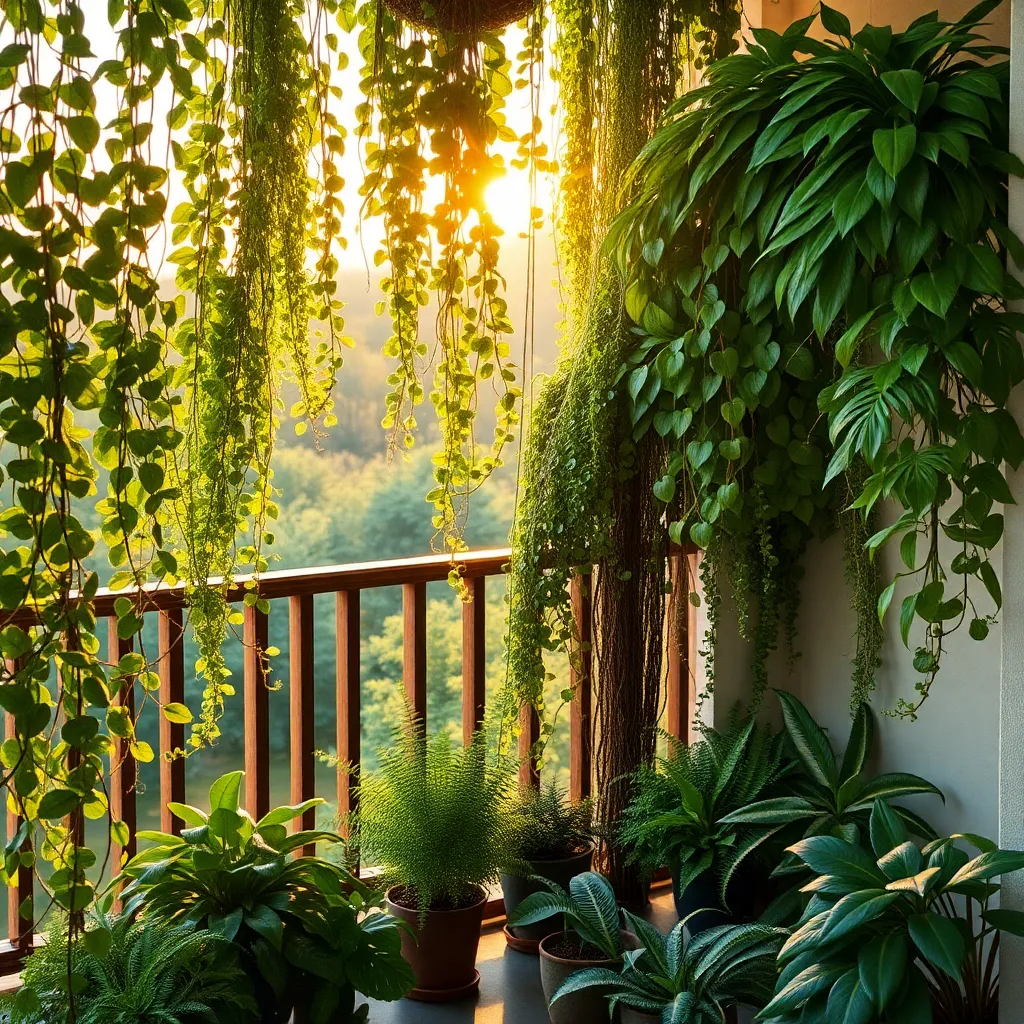
Creating a private sanctuary with hanging plants is both beautiful and functional. Hanging plants can effectively obscure views while adding a lush, green aesthetic to your space.
Start by selecting the right plants for your climate and light conditions. Ferns, ivy, and pothos are excellent choices for shaded areas, while sun-loving plants like petunias and geraniums thrive in brighter spots.
To ensure your hanging plants flourish, use a high-quality potting mix that offers good drainage. Water your hanging plants regularly, but be sure to let the top inch of soil dry out between waterings to prevent root rot.
Consider the growth habits of your chosen plants to maximize privacy. Trailing plants can be trained to drape downwards, while bushier plants can fill in gaps and provide more coverage.
For advanced gardeners, experimenting with vertical layering can enhance privacy. Hang plants at different heights and depths to create a more dynamic and dense screen that effectively blocks unwanted views.
Regular maintenance, including pruning and fertilizing, will keep your hanging plants healthy and vibrant. Use a balanced liquid fertilizer every month during the growing season to encourage lush growth and flowering.
Customizing Hanging Planters with Style
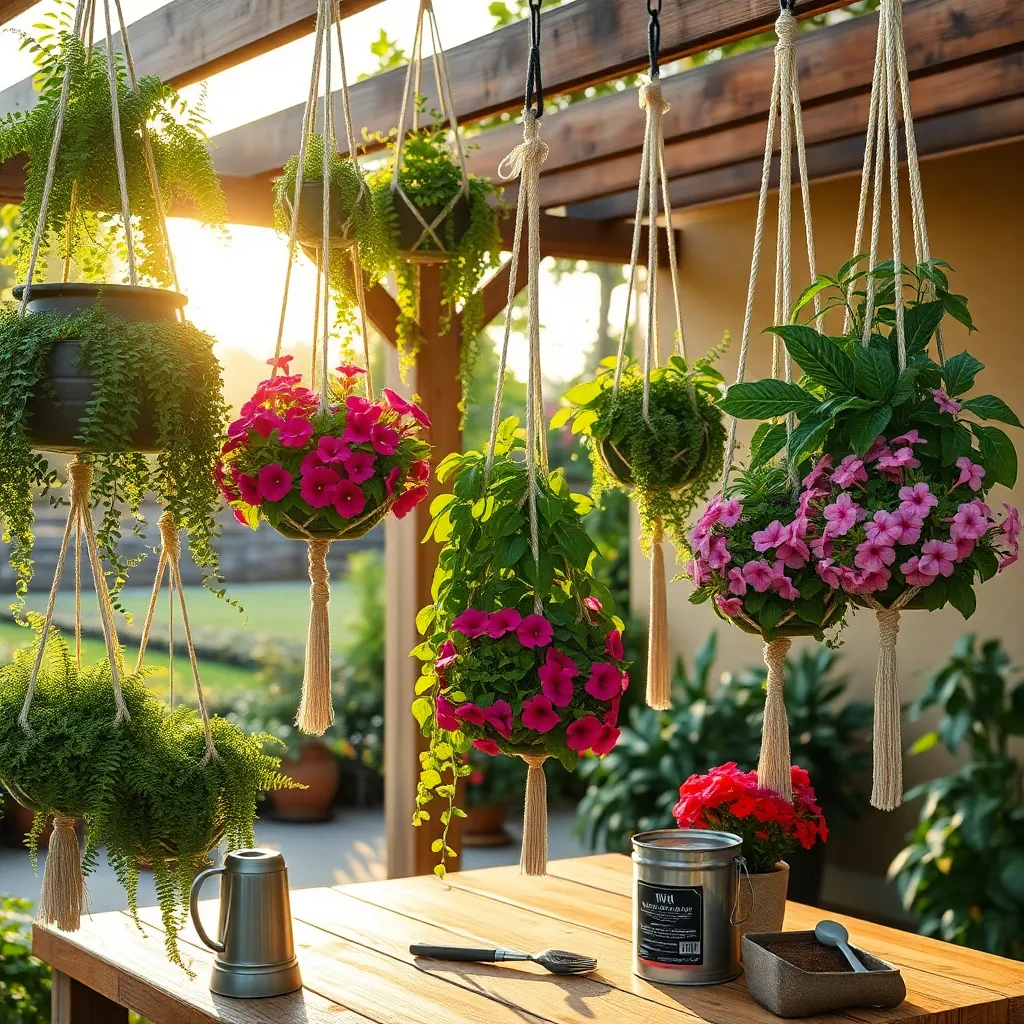
Customizing your hanging planters allows you to express your personal style while enhancing your garden’s aesthetic. Start by choosing planters that complement your existing outdoor decor, considering materials like ceramic, metal, or sustainable options like recycled plastic.
To give your hanging planters a unique touch, consider painting them with weather-resistant paint in vibrant colors or patterns. This not only adds a personal flair but also protects your planters from the elements, ensuring longevity.
For a more advanced touch, incorporate materials like macramé or jute to create intricate hanger designs. These materials are not only aesthetically pleasing but are also durable and can support the weight of most plants.
Pay attention to the plants you choose for your customized planters, ensuring they thrive in their new environment. Opt for plants like ferns or ivy that can adapt well to a variety of light conditions, or for a splash of color, try petunias or begonias, which flourish in sunny spots.
Ensure your chosen plants have the right soil mix; a well-draining potting mix is key to preventing root rot. Consider adding a layer of pebbles at the bottom of the planter to improve drainage, which is especially crucial for plants that prefer drier conditions.
Regular maintenance is vital for the health of your hanging plants. Water them thoroughly until water drains from the bottom, typically once or twice a week, adjusting based on the plant’s specific needs and environmental conditions.
Caring for Your Hanging Plants
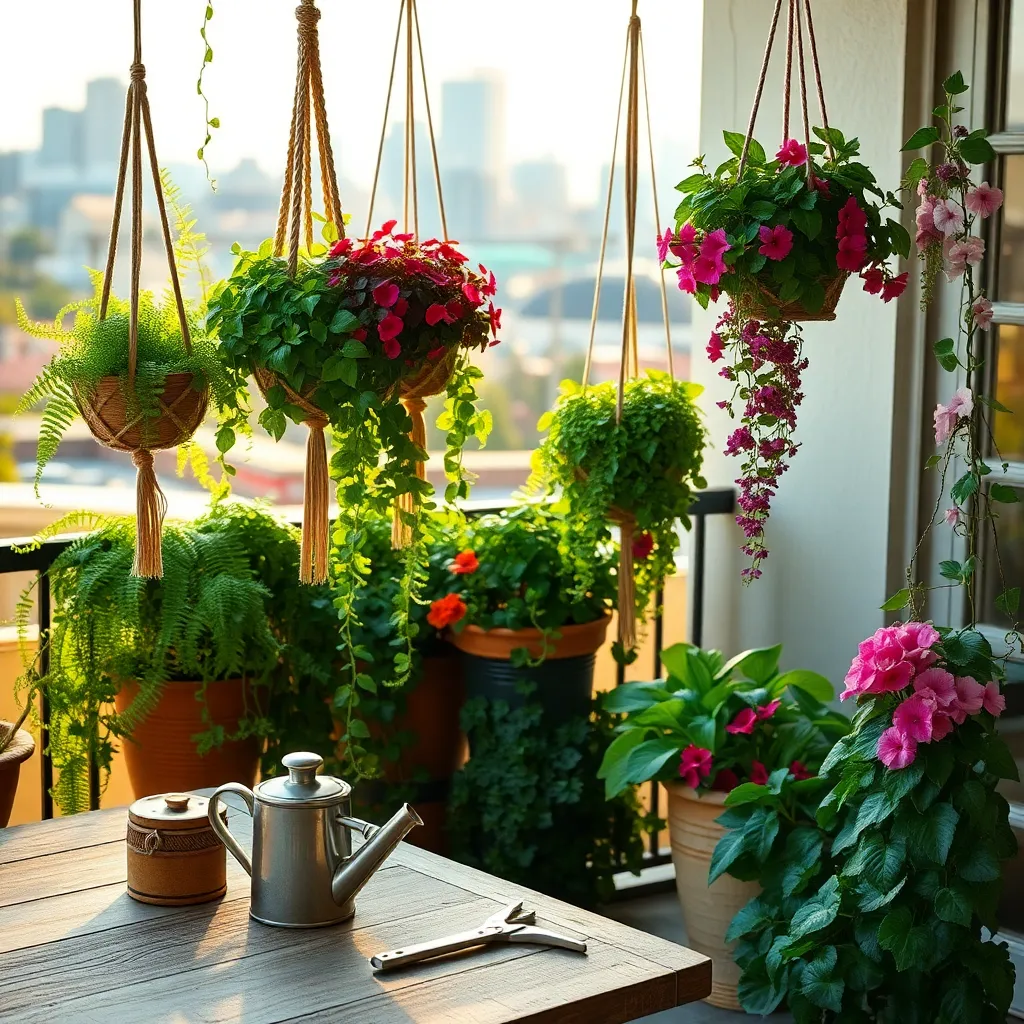
Caring for hanging plants involves understanding their unique needs due to their elevated position. First, consider the light conditions—most hanging plants thrive in bright, indirect light, so place them near windows or in well-lit rooms.
Watering hanging plants can be a bit tricky, but it’s essential to keep them healthy. Check the soil moisture regularly by sticking your finger an inch deep into the soil; if it’s dry, it’s time to water.
Use a well-draining potting mix to prevent waterlogging, which is a common issue for hanging plants. A mix designed for container plants with added perlite or sand can enhance drainage and ensure roots have the airflow they need.
Fertilizing hanging plants is crucial for their growth and flowering. Apply a balanced liquid fertilizer every month during the growing season, but reduce feeding in the winter months when growth slows down.
Pruning is an important aspect of hanging plant care to maintain their shape and encourage bushier growth. Trim any dead or yellowing leaves and cut back long stems to keep the plant tidy and promote new growth.
For those looking to advance their green thumb, try experimenting with different plant varieties like ferns or trailing succulents, which offer unique textures and colors. These plants require specific care adjustments, such as reduced watering for succulents, making them a fun challenge for experienced gardeners.
Conclusion: Growing Success with These Plants
As you delve into the creative world of DIY projects using hanging plants, you’ve uncovered 10 vital relationship concepts that intertwine with each project. From nurturing growth and fostering communication to embracing individuality and supporting each other’s dreams, these projects remind us that relationships, much like plants, thrive on care, attention, and creativity. Through these shared activities, you’ve explored the importance of patience, adaptability, trust, and teamwork, alongside the joy of shared accomplishments and the beauty of creating a nurturing environment together.
Now, take a moment to choose one project and set a date with your partner to embark on this creative journey. This simple yet meaningful step can reignite the spark and deepen your connection.
Remember, relationships flourish when we actively invest time and energy into them. Bookmark this article as your go-to guide for refreshing your bond with these fun and inspiring projects. As you move forward, let each hanging plant serve as a symbol of your relationship’s potential to grow and bloom. Embrace the journey ahead with enthusiasm and confidence, knowing that each small act of love and creativity builds a thriving foundation for your shared future.

